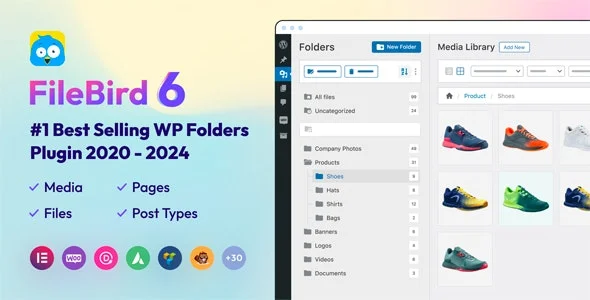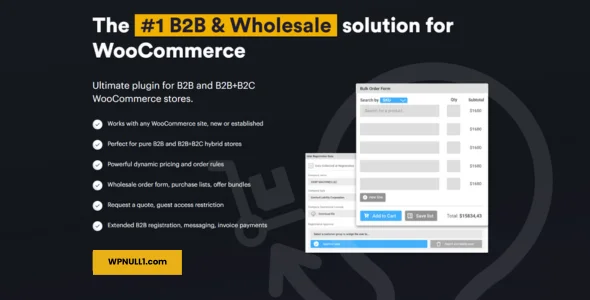Tailkit Design super modern dashboards and websites in minutes Nulled is a comprehensive UI component library built specifically for Tailwind CSS, a popular utility-first CSS framework. Designed to accelerate web development, Tailkit provides developers with a set of pre-built, customizable components, such as navigation bars, buttons, modals, and form elements, allowing for rapid prototyping and efficient website creation. Tailkit’s seamless integration with Tailwind CSS enables developers to maintain a consistent design while using a highly scalable and efficient development approach.
In this blog post, we’ll dive into the main features of Tailkit, explore who it’s ideal for, discuss its pros and cons, and compare it with several popular alternatives in the Tailwind CSS ecosystem.
1. Pre-Built UI Components
Tailkit Design super modern dashboards and websites in minutes Free Download offers a vast library of pre-built UI components, saving developers time and effort in designing elements from scratch. These components include headers, footers, cards, modals, navigation bars, sliders, and more. Each component is fully customizable, giving developers the flexibility to tweak designs to match the branding or style of their projects. The components are designed to be responsive and follow modern web design trends, ensuring a polished and professional look across devices.
By offering such an extensive range of components, Tailkit ensures that developers can quickly assemble complex layouts with minimal effort, speeding up the entire design and development process.
2. Tailwind CSS Integration
Tailkit is specifically built for Tailwind CSS, which is a utility-first CSS framework known for its simplicity and flexibility. Tailwind provides a robust design system through utility classes, and Tailkit enhances this by offering pre-designed components that are styled with these utility classes. This combination makes the development process more efficient, as developers can focus on creating functionality without worrying too much about design details.
Additionally, because Tailkit uses Tailwind’s utility classes, developers familiar with Tailwind CSS will find it easy to customize and adapt Tailkit components to suit their needs. This integration ensures that the overall design remains consistent throughout the project.
3. Dark Mode Support
Tailkit includes native support for dark mode, allowing developers to create websites that automatically adapt to the user’s system preferences. Dark mode is becoming increasingly popular among users, and having this feature built into Tailkit makes it easy for developers to implement this design option without needing to create separate stylesheets or configurations. With just a few tweaks, developers can ensure that their websites offer a visually appealing experience, whether viewed in light or dark mode.
4. Detailed Documentation and Examples
Tailkit provides detailed documentation and examples, making it easy for both beginners and experienced developers to get started. The documentation covers how to integrate Tailkit with Tailwind CSS, customize components, and implement various features. Tailkit also offers code snippets and live previews of components, enabling developers to quickly see how elements work and how they can be customized for specific use cases.
This focus on documentation ensures that developers can hit the ground running, even if they’re new to Tailkit or Tailwind CSS.
Customization and Flexibility
1. Highly Customizable Components
One of the key benefits of Tailkit is the high degree of customization it offers. Each component is built using Tailwind’s utility classes, which makes it easy to customize any aspect of the design without having to write custom CSS. Developers can modify colors, spacing, fonts, and layout structures simply by adjusting the utility classes directly in their HTML.
This level of customization is particularly useful for projects with specific design requirements, as it allows developers to maintain creative control while still benefiting from pre-built components.
2. Responsive Design
All Tailkit components are designed to be fully responsive, ensuring that websites created with the library look great on all devices, including desktops, tablets, and smartphones. Tailkit leverages Tailwind’s responsive design utilities, allowing developers to easily create layouts that adjust dynamically based on screen size.
Responsive design is critical in today’s web development environment, and Tailkit’s ability to handle this out of the box saves developers significant time when building responsive websites.
3. Custom Animations and Interactions
In addition to static components, Tailkit offers built-in support for animations and interactive elements, such as hover effects, transitions, and modals. These animations are fully customizable and can be integrated into any component, giving websites a modern and engaging user experience. By combining Tailwind’s utility classes with Tailkit’s pre-built animations, developers can create dynamic interactions without needing additional JavaScript frameworks.
Who is Tailkit Ideal For?
- Frontend Developers: Tailkit is perfect for frontend developers who need to quickly prototype or develop full-scale web applications. Its pre-built components allow developers to focus on building functionality without worrying about designing every UI element from scratch.
- Agencies and Freelancers: For agencies and freelancers working on multiple projects, Tailkit offers a fast and efficient way to deliver visually appealing websites to clients. The ready-made components reduce development time, enabling faster project completion.
- Developers New to Tailwind CSS: Developers who are new to Tailwind CSS will find Tailkit’s pre-designed components helpful for learning the framework. By using Tailkit as a starting point, beginners can quickly familiarize themselves with Tailwind’s utility classes and best practices.
- Businesses with Tight Deadlines: Companies that need to launch websites quickly can benefit from Tailkit’s efficiency. The combination of Tailwind’s utility-first approach and Tailkit’s customizable components provides a robust solution for creating professional websites under tight deadlines.
Pros and Cons of Tailkit
Pros:
- Extensive Component Library: Tailkit offers a wide range of pre-built UI components, helping developers build websites faster and more efficiently.
- Tailwind CSS Integration: Seamless integration with Tailwind CSS ensures that developers can maintain design consistency while customizing components easily.
- Responsive and Modern Design: All components are fully responsive and follow modern web design trends, making them ideal for any type of project.
- Dark Mode Support: Native dark mode support makes it easier to provide users with a visually appealing experience across different viewing preferences.
- Highly Customizable: Tailkit components are fully customizable using Tailwind’s utility classes, giving developers control over every aspect of the design.
Cons:
- Learning Curve for Beginners: While Tailkit is designed to be beginner-friendly, those unfamiliar with Tailwind CSS may face a learning curve when trying to customize components.
- Limited Advanced Functionality: Tailkit focuses on UI components and does not offer more advanced functionality, such as complex interactions or state management, which may require additional JavaScript libraries.
- Dependency on Tailwind: Since Tailkit relies heavily on Tailwind CSS, it’s not suitable for developers who prefer other CSS frameworks like Bootstrap or Bulma.
Comparing Tailkit with Popular Alternatives
- Tailwind UI
- Tailwind UI is one of the most popular component libraries for Tailwind CSS. It offers a more extensive range of components compared to Tailkit but comes with a premium price tag. Tailkit is an excellent alternative for developers looking for a more affordable or free solution with similar features.
- Flowbite
- Flowbite is another component library designed for Tailwind CSS. While Flowbite offers a similar range of components, it also includes more advanced JavaScript-based features like modals and tooltips. Tailkit, on the other hand, focuses more on pure Tailwind components without additional dependencies, making it lighter and easier to use for simpler projects.
- DaisyUI
- DaisyUI is a plugin for Tailwind CSS that adds a range of UI components and utility classes. While DaisyUI is easy to use and highly customizable, Tailkit provides a more complete package with detailed documentation and a more polished design aesthetic.
- UIkit
- UIkit is a general-purpose CSS framework that offers components and utilities for building responsive websites. While UIkit is feature-rich, it is not specifically built for Tailwind CSS, which makes Tailkit a better choice for developers committed to the Tailwind ecosystem.
Tailkit Nulled is a powerful and flexible UI component library for developers working with Tailwind CSS. Its pre-built components, easy customization options, and focus on performance make it an excellent choice for frontend developers, agencies, and businesses looking to streamline their web development process. Compared to alternatives like Tailwind UI, Flowbite, DaisyUI, and UIkit, Tailkit Free Download offers a balance between functionality and ease of use, especially for those already familiar with the Tailwind CSS framework.






